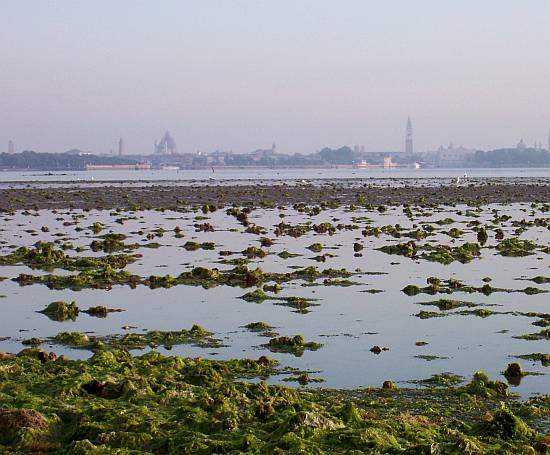Due to a small technical tangle, I couldn’t add much illustration to my post about the America’s Cup.
Now that the tangle has been untied, here goes:
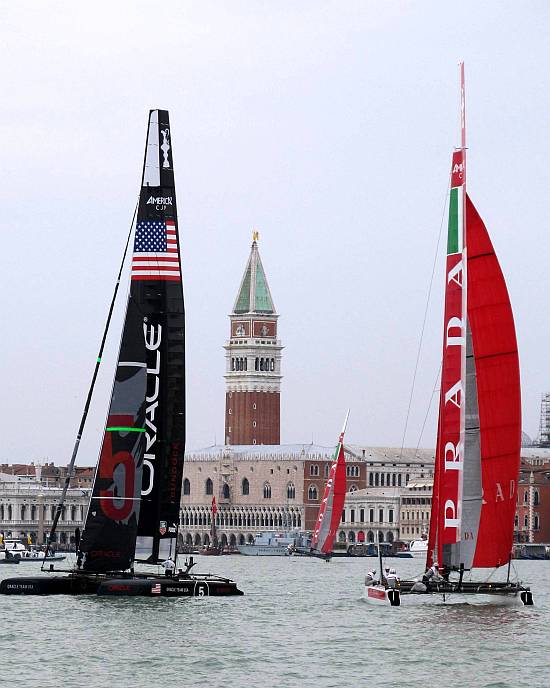

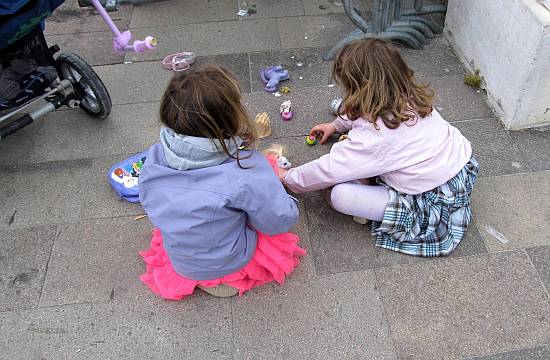

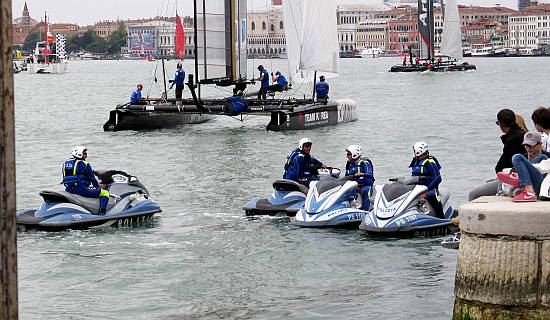
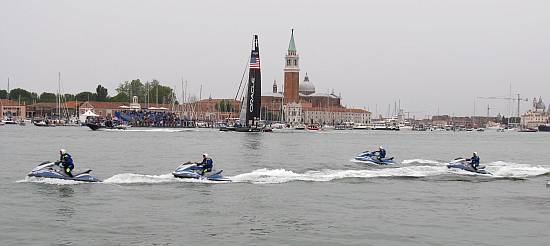
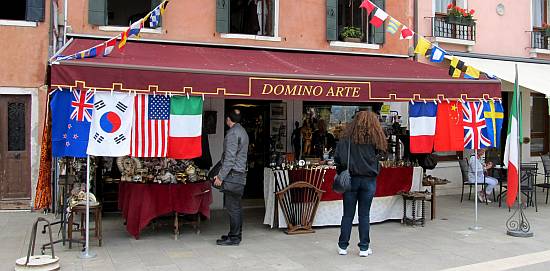
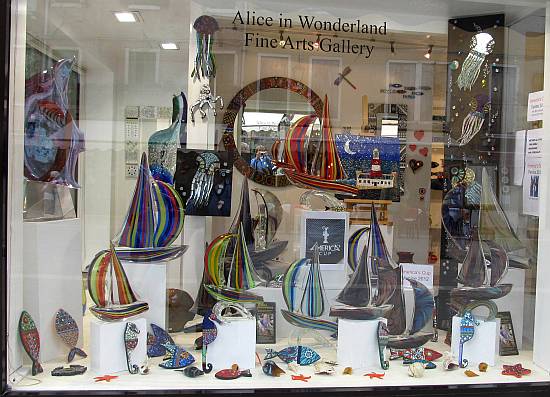
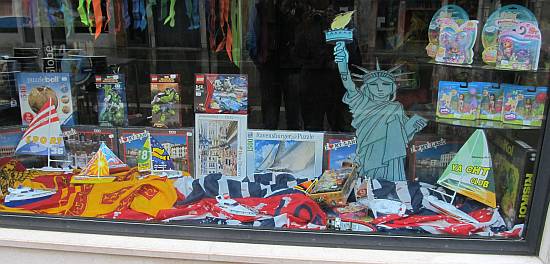
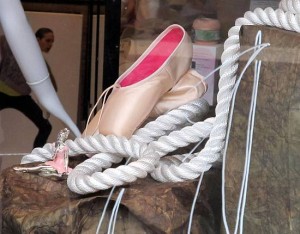
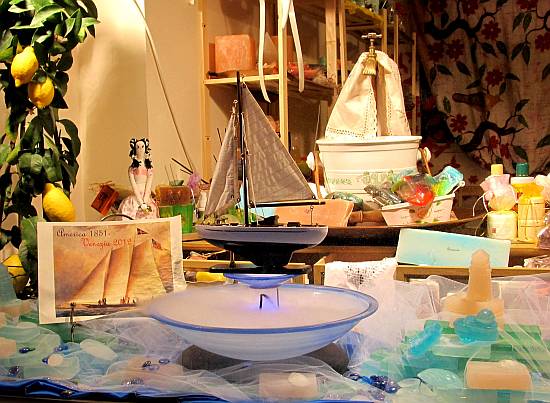
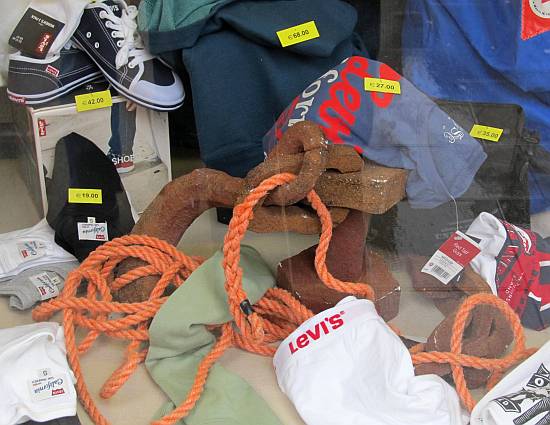


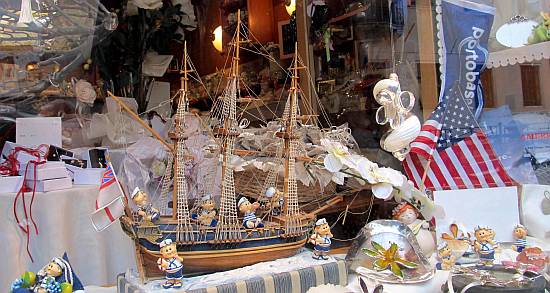
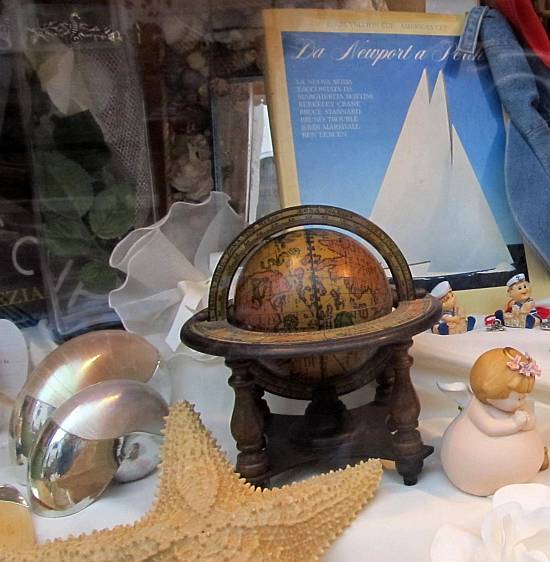
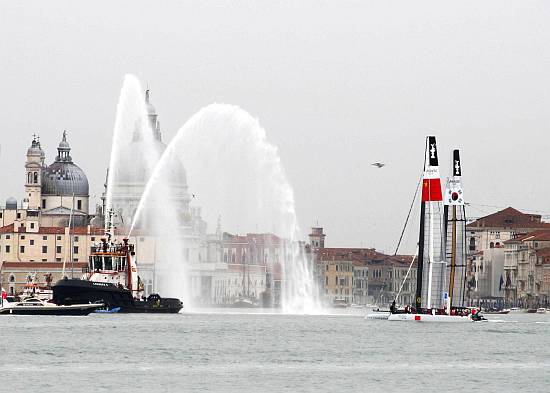

Due to a small technical tangle, I couldn’t add much illustration to my post about the America’s Cup.
Now that the tangle has been untied, here goes:


















I’ve noticed that there are people who don’t like to change their minds, but I do. It generally means I’ve learned something. Here follows my most recent advance.
For the past two weeks or so, there were intermittent and increasing signs of the arrival of a Very Big Time sailing race to be held last weekend: Catamarans battling it out for a title belonging to something known as the World Series of the America’s Cup. There were to be races in the Adriatic just off the Lido, and races in the Bacino of San Marco. The idea of a boat race in what amounts to the center of downtown struck me as extremely strange, possibly not appropriate, probably not very successful. This reaction wasn’t the result of actual thought, just the force of habit.
Essentially, it sounded like it was going to be Just Another Thing. Specifically, just another of those many things which exploit Venice as a stage set, but which have nothing to do with the city and which only create problems for everybody.
Wrong again.
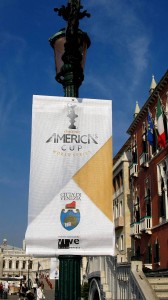
Yes, I had observed intriguing new elements, such as the various crews walking around the neighborhood (the boats were kept in the Arsenal). These were men of various sizes who seemed to have been hewn from oak: All young, all strong, all superbly confident. I don’t mean confident of winning, I mean confident of existing.
It was also announced, in what seemed to me to be a cute sort of “go team” spirit, that a prize would be awarded to the shop on via Garibaldi which was deemed to have created the most imaginative window display with a nautical theme.
That’s as far as I’d gone with tuning into this event.
Then, on my way home Friday afternoon about 5:00, tired and cranky, I found myself at San Marco, stuck because the vaporettos had been suspended because of the races. First reaction: Oh swell.
Second reaction: My God, that’s a lot of helicopter racket from overhead (there were four). As I began my inevitable walk home, plod plod, I looked out at the water. Then I stopped.
Maybe those people on dark Kentucky back roads who find themselves in front of a UFO feel something like what I felt. Because the Bacino had suddenly been transformed from its usual condition of resembling the Wal-Mart parking lot on the last Saturday before school starts into an arena that could only be described as epic.
The Bacino had been taken over by majestic beings skimming with a speed and precision that made it hard to believe they were even touching the water.
It was thrilling.
On your average day/week/era, Venice makes it far too clear that however much it wants to bill itself as a world-class city (credible only because it once was), today it’s essentially a small town in Ohio. And nothing could have made this clearer than to suddenly find the city in the throes of what was in fact a truly world-class event.
I don’t especially care about catamarans and I don’t spend much energy on the America’s Cup. Of course I’m vastly proud of it and know that it’s a huge deal, but I suppose if everybody said, “oh well, let’s not do this anymore,” it wouldn’t have much effect on the fate of the world.
But this was beyond dazzling. The sheer magnitude and splendor of these creations, the diabolical skill of their creators and their sailors (not to mention their owners), the stunning effect of seeing something this important here in little old Venice — I literally stopped in my tracks. And beyond the beauty and strangeness and scope of it all, behind the roaring of the helicopters, you could also hear the roar of the cataract of money which had created all this, which, in a strange way, also added to its fascination. It was like standing under an Iguazu Falls of dollars. Euros. South Korean wons.
It was too much. Venice, which spends most of its time plinking out the same drab little melodies (“We have no money, there are too many tourists, we hate/love/hate/love the big cruise ships, we don’t know what to do about anything…….”) was suddenly on center stage in the middle of the Ride of the Valkyries.
And she pulled it off. There were thousands and thousands of spectators for the finals over the weekend, the hotels were full, and the weather exceptional (except for Sunday afternoon, when the wind wore out). All told, a spectacular success. In fact, it may have been the first time that I glimpsed some sliver of the sheer magnificence which used to be the order of the day here, the grandeur which overwhelmed every visitor who ever got within eyeshot of the place.
That’s where my mind changed. Ideas here, however good and even expensive they may be, are usually left only partially realized, or fully realized and then abandoned, or briefly put aside and then forgotten.
But this was brilliant. Which brought to mind my high school choir director. The first time we managed to do something exactly the way he wanted, he’d stop. “Now you’re in trouble,” he’d say. “Because now I know you can do it.”
Venice, over to you.
PS: Many photographs will be coming as soon as a technical seizure is resolved.

I can tell you precisely when was the last time I sat and looked at art. It was Easter morning, and I wasn’t in a museum.
We were sitting in the front row of the basilica of San Marco and the occasion was the elaborate festal mass. The sermon was well underway. I had had every intention of listening carefully, because it was the new patriarch’s maiden voyage and I had been curious to check his rigging and navigation skills on one of the biggest days of the year.
If you’d like to know more, you’ll need to ask someone else. Because while he didn’t drift into uncharted political or theological waters (I’m finished with this metaphor now), as his predecessor used to do, he wanted to convey a message I couldn’t follow, and he was in no hurry to finish it. It was the religious equivalent of the stationary bicycle.
To be fair, he could just as well have been reading the Government Printing Office Style Manual, because the basilica of San Marco is an Olympics-level competitor if you’re trying to get somebody’s attention. So I made the most of being installed in my seat for a while, and let my eyes wander around the opulence of the basilica itself. And where my eyes wander, my brain tends to follow.
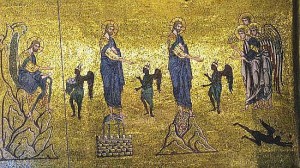

After scanning my usual favorites (the mosaic depicting the Temptation in the Wilderness, the bug-eyed lion of San Marco in the Prophets Cupola, the relief on the small marble altar outlining Saint Paul’s crisis on the road to Damascus), I let my eyes settle on the Pala d’Oro.
One usually has to pay a small fee to go behind the high altar to see this prodigy, but on major feast days it is rotated to face the nave. Of course, when you’re seated out there you can’t discern much detail, but even from a distance you can tell it’s something phenomenal.
As I gazed at it, I let my eyes slide beyond the extravagant assortment of enamel medallions, and the myriad (1,927, actually) precious and semi-precious stones, and its gleaming golden surface, dazzling though it all may be.
What I saw were the hundreds of people involved in making it, and how hard the work was, and how much it cost. I don’t mean the bills that were presented to various doges, or what its total price would be today in round dollars, if such a thing could be calculated, which it probably can’t.
I mean the money every single person earned who was involved in this project, bearing in mind that what we see is the result of additions, substitutions, and renovations over centuries. If thinking of Accounts Payable seems crass, it probably wasn’t so crass to the artists who made it. Art is many things, but toward the top of the list is the word “business.” I doubt that any more than .0035 percent of all the art in the world was made for free.
The number of individuals who contributed to this prodigious creation is similarly difficult to calculate, along with their vast amount of skill, effort, and imagination. So let’s take just one person.
I’m thinking about a master enamelist. First, there are the years he spends as an apprentice, doing the scut work, making mistakes, throwing things out, learning little tricks, getting yelled at. He learns how to work with wire, with glass, with color, with fire. After I don’t know how long, he ‘s good enough to get the commission to do five saints (let’s say).
So he goes home to give his wife the good news, and tells her how much he’s going to be paid (and when!). And they stay up late feeling happy and trying to decide how they’ll spend the money — finally buy that horse? Pay the butcher? Order their daughter’s wedding dress?
Then I thought the same things about the artist who applied the baroque pearls (years, labor, etc.). Then I stepped back one step to the merchants who sold and bought the pearls (years, labor). And the person who brought the pearls from the Persian Gulf to Constantinople. And the person who dived for the pearls. (I stopped short of imagining the oyster making the pearls, but you’re free to go ahead.)
Then I thought about the gold-leaf beaters and appliers. (This is no small thought, considering that the Pala d’Oro consists of gold in many forms: repousse’, cast, applique’, chased, stamped, matted, and filigrees, not to mention granulation and beading.) The gold merchant. His wife and kids. The camel-driver and ship’s captain who carried the gold. Their wives and kids. The gold miner. His wife and kids.

So I probably missed an excellent sermon while I was imagining spouses and offspring and extra food and new shoes and sick grandfathers and quack doctors and on and on, through the whole infinitely expanding intricacy of the connections between just about everything.
So whenever I see a few square inches of art (frescoes, mosaics, marble statues, kilim carpets, whatever), I sometimes unleash my mind and let it roll around like a Weazel Ball among centuries and countries and people.
I came back to my immediate surroundings when they passed to take up the collection. Speaking of money.

April 25 is here again, one of the bigger days in the Venetian calendar. Its importance is in inverse relationship to the ceremonial recognition of it, which is modest to the point of near-invisibility.
A long-stemmed red rose (the “bocolo”) and a scattering of fresh laurel wreaths leaning against important municipal monuments are about the only signs of anything different about today. Lovely, but small.
This year, however, a special significance joins the memory of San Marco and of the liberation of Italy in 1945.
One hundred years ago today, the campanile of San Marco was inaugurated — that is, the reconstructed tower which had collapsed at 9:53 AM on July 14, 1902.

The city was justifiably proud of having rebuilt its most visible monument as it had vowed to do: “Com’era e dov’era” — as it was and where it was. And in a mere ten years, too. Not bad, considering that they had had to work on the foundation, cast four new bells, repair the pavement of the Piazza, and sift tons of wreckage to recover any bits that were reusable. And it may well be the only public work which was not undertaken to the accompaniment of “no ghe xe schei.”
The history of this belltower is — like most things here — very interesting and very complicated. The version we see today was constructed in 1511, the last in a line of ever-heightening towers on that spot which had served as lighthouse, lookout point, and bell-bearing structure. Every church has its bells somewhere nearby, and the basilica of San Marco has this monolith. Whether or not you think it’s beautiful or appropriate (naturally opinions swarm all over the place), it is undeniably the guardian of Venice. “El paron’ de casa,” as it is known more familiarly — the head of the house.
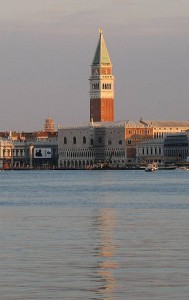
If nothing else, the fall and rise of the campanile of San Marco stands as yet another monument to political and bureaucratic misfeasance. Because while the city can be justly proud of its accomplishment in rebuilding it, a dark, thick veil of silence covers the reasons for why it happened in the first place. As in: It shouldn’t have happened at all.
Here is a rapid review. The campanile had suffered almost every kind of damage over the centuries — earthquakes, fires caused by lightning strikes, general wear and tear — and had undergone more restorations than Joan Rivers.
But with the arrival of modernity, more things were done which a 400-year-building weighing around 13,207 tons (11,981,224 kilos) wasn’t able to withstand. Such as the cutting of a hole in the brick wall big enough to get the caretaker’s new stove in.
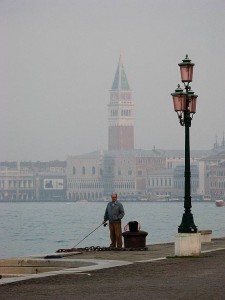
While discussions continued (the eternal confrontation between the “bail! bail!” party and the “row faster!” party), a cordon was placed around the tower to keep the public at a safe distance.
On July 13, some of the technical experts — engineers! architects! — were still proclaiming that there was no danger of collapse, but recommending further study.
At 4:00 AM on the morning of July 14, a worried Luigi Vendrasco, the master mason, came to the Piazza. He could see that the deterioration was increasing at a noticeable rate. At 5:30 came Domenico Rupolo, the architect in charge of the works. Together they rushed to Pietro Saccardo, the overseer of the basilica of San Marco. They all headed for the Prefect, where they were joined by Federico Brechet, director of the Regional Office for the Conservation of Monuments, and Alberto Torri of the Civil Engineers.
Brechet and Torri wanted to go up the campanile for a closer examination, but Rupolo talked them out of it. I’m guessing they sent him a big gift basket every Christmas for the rest of their lives.
Meanwhile, a passing journalist asked a policeman stationed as a guard in the Piazza for any news. The policeman replied, “Mi digo che no passa sinque minuti e casca zoso tuto.” (I’d say that in less than five minutes the whole thing is going to fall down.) He called it.
At 9:30 the shops on the south side of the Piazza were ordered closed, and the Piazza was cleared out. At 9:47 pieces of stone began to fall. At 9:53, the whole thing went down with a dark, heavy roar, raising a cloud of dust of Biblical proportions.
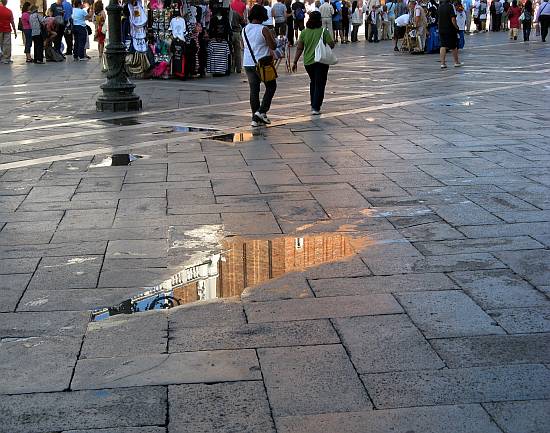
“What is there to marvel at?” raged Luigi Vendrasco, the master mason who had been pleading for years for immediate and correct intervention to prevent this very occurrence, creating so many enemies that he lost his job. “It fell? I’ve been saying this for ten years! I’ve been amazed that it hasn’t happened sooner. And then, it hasn’t ‘fallen’ — they threw it down and it obeyed!… Without a doubt the campanile could have been saved, if since 1892 certain things had been done and certain other things hadn’t been done. Even in these last few days, if, instead of putting on lots of monitoring devices on a wound that even a blind person could see, that that wound had been directly addressed. The final and determining cause of the breakdown was the cut at the base for the work on the Loggetta di Sansovino.”
He was referring to the little job undertaken in early July to replace the lead roof of the Loggetta, which was attached to the campanile facing the basilica. To prevent rain from filtering into the bricks, an overhanging slab of an undefined material had been inserted into the campanile.
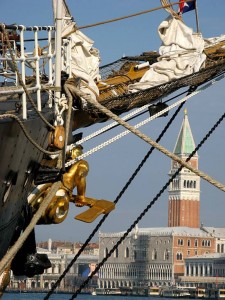
There is a little game kids used to play at the beach — maybe they still do — called the “gioco della polenta.” You make a big mound of wet sand. Then each of you in turn c-a-r-e-f-u-l-l-y removes a handful of the sand from the base of the mound. The object is to not be the person whose handful causes the whole thing to cave in.
The mayor said the collapse of the campanile had been unforeseeable. He must never have gone to the beach.
